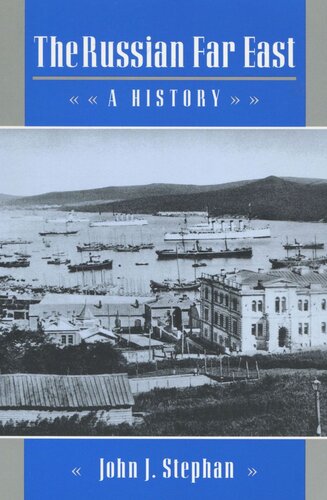

Most ebook files are in PDF format, so you can easily read them using various software such as Foxit Reader or directly on the Google Chrome browser.
Some ebook files are released by publishers in other formats such as .awz, .mobi, .epub, .fb2, etc. You may need to install specific software to read these formats on mobile/PC, such as Calibre.
Please read the tutorial at this link: https://ebookbell.com/faq
We offer FREE conversion to the popular formats you request; however, this may take some time. Therefore, right after payment, please email us, and we will try to provide the service as quickly as possible.
For some exceptional file formats or broken links (if any), please refrain from opening any disputes. Instead, email us first, and we will try to assist within a maximum of 6 hours.
EbookBell Team

4.4
32 reviewsWedged between China, Korea, Japan, and the United States, the Russian Far East has for centuries been a meeting ground for Eurasian and American peoples and cultures. Conventionally regarded as perimeter, it is in fact a collage of overlapping borderlands with a distinct historical identity. Based on a quarter-century of research by a leading authority on the area, this is a monumental survey of Pacific Siberia from prehistoric times to the present. Drawing from political, diplomatic, economic, geographical, social, and cultural evidence, the book reveals that this vast, rugged, and supposedly insular land has harbored vibrantly cosmopolitan lifestyles. For over a millennium, Chinese culture found expression in Tungus, Mongol, and Korean polities. Russian penetration in the seventeenth century eventually turned the region into a colony sustained by state subsidies, foreign enterprise, and a mosaic of Ukrainian, Estonian, Finnish, German, Chinese, Korean, and Japanese communities. Tsarists and Soviet penal policies contributed to the diversity and volatility of Far Eastern society. Regional aspirations articulated by Siberian intellectuals, disingenuously institutionalized in a Far Eastern Republic (1920-22), survived lethal bouts of economic and demographic engineering to come to life again in the post-Soviet era. The Russian Far East today reverberates with autonomist rhetoric, but if the region is no longer an appanage, it is still far short of independence. For the time being, the robust tradition of cosmopolitanism is reinventing itself under the banner of capitalism. Reexamining twentieth-century history through a Far Eastern prism, the book offers fresh and often provocative perspectives on imperial rivalries, colonialism, revolution, civil war, and utopianism gone awry in Northeast Asia.